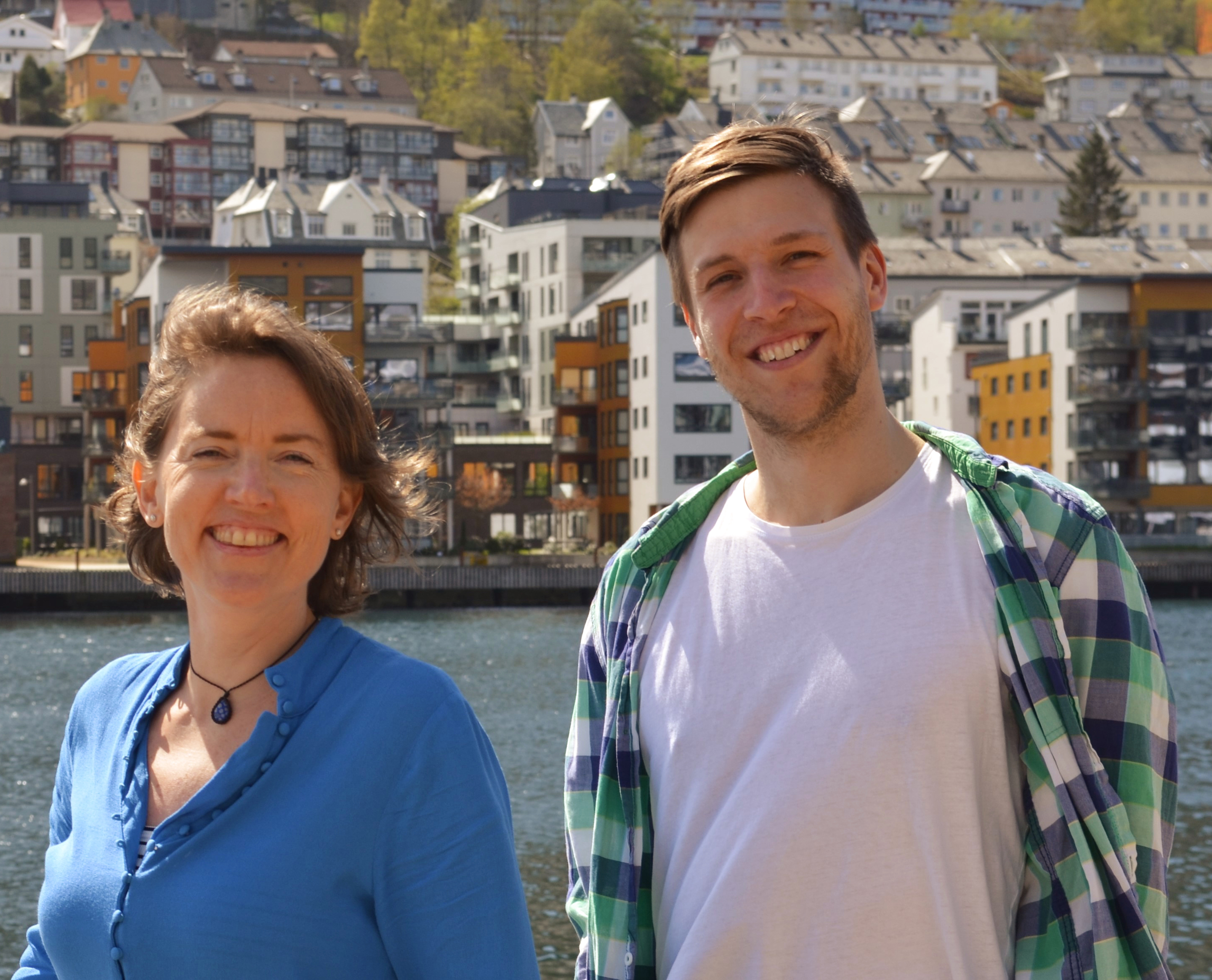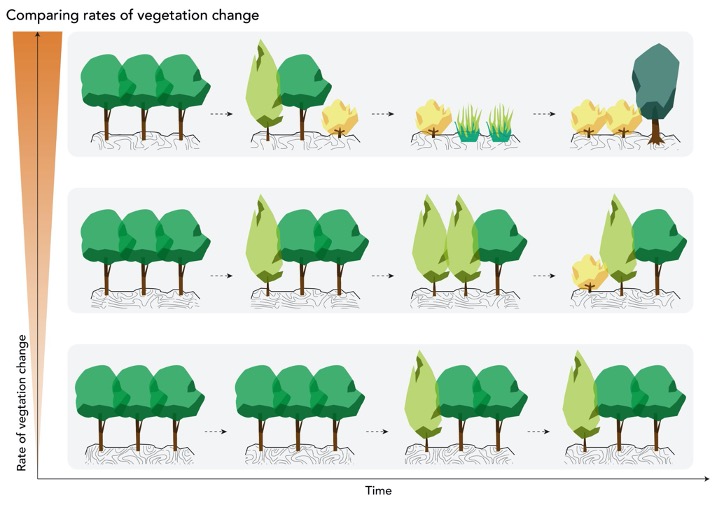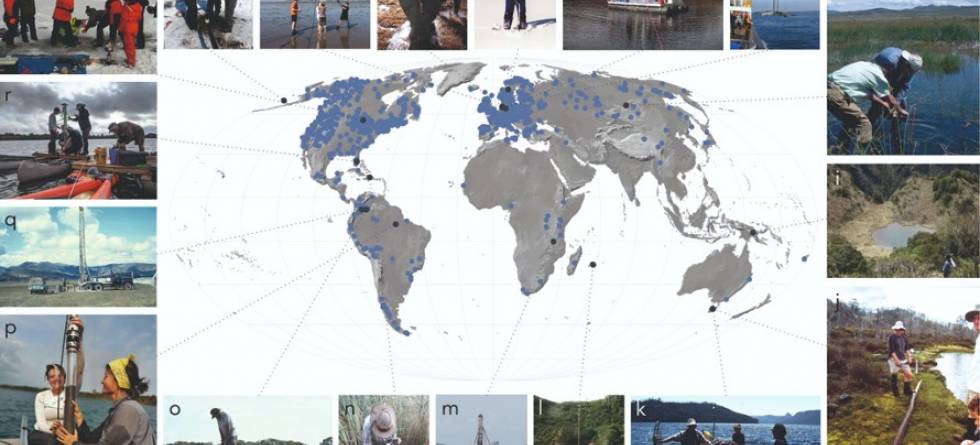Press release from University of Bergen, by Jens Helleland Ådnanes
In the paper, the authors assess global patterns of rates of vegetation change from the last deglaciation, through the Holocene, and up to the recent years, covering all continents except Antarctica. Rate of change is the magnitude of change over a defined period of time, and it can be used to describe if an ecosystem is changing faster or slower. This assessment provides crucial insights into the degree of change that vegetation endured over the last 18.000 yr on a global scale.

"Vegetation always changes to some degree through time. It changes because of climate or humans, or due to both. By looking into responses of vegetation during the last 18.000 years, we see that the degree of vegetation change has not been synchronous in space, meaning that vegetation changed at different moments and magnitudes. During substantial climatic changes, such as when the world warmed after the last ice age 18 thousand years ago, some areas responded similarly, like across temperate zones. However, we see this pattern wasn’t necessarily echoed in the tropics, so there was no such thing as one global vegetation response to climate," says Dr. Suzette Flantua.
Dr. Flantua is a global change ecologist at the University of Bergen (UiB) and the Bjerknes Centre for Climate Research in Norway. Together with Dr. Ondřej Mottl, UiB data scientist, they are the first authors of a paper published in Science (Mottl, Flantua et al 2021).
Their outcomes are based on 1181 fossil pollen records derived from the open-access Neotoma Paleoecology Database, a global data resource that stores multiple kinds of fossil, palaeoecological, and paleoenvironmental data. Analysing such large quantities of data is no small feat. Mottl explains that estimating rates of vegetation change based on existing metrics had been seen as unreliable in the palaeoecological community due to various issues. However, together with UiB and international colleagues, they came up with a new approach which has been presented in related paper and recent R package, called R-Ratepol.
"The process of developing a new rate of change method resulted from a workshop with a lot of scientific discussions with other members of our team. Then I basically got my head down and figured out a way to apply the theory into the code. For me that is the best part, to find an issue, put it into code, and then solve it," Mottl laughs.
The paper shows that approximately 4000 years ago, rates of vegetation change started to accelerate up until the present and such patterns are unambiguously global.

FIGURE. Comparing rates of vegetation change. In biodiversity science, a key question is understanding how quickly ecosystems change over time. Ecosystems that undergo large changes in species composition in a very short time will have high rates of change. Artwork by Milan Teunissen van Manen (@MilanTvM).
"It gave us a good understanding of the impact of our paper. Since most ecologists, studying current ecosystems, have records dating back decades or in some cases 100 years, so they are inclined to think that more drastic changes in vegetation started more recently. We show that the legacy of an accelerated change goes even further back. It has major implications for how we perceive our natural world right now," he explains.
“One of my main research interests is to find ways to harness the information from long-term ecological datasets to better understand present-day patterns of biodiversity”, said Alistair Seddon, a global change ecologist and part of the senior authorship team.
“This paper does just that and provides an example of how fossil pollen can be used to track global patterns of biodiversity over much longer timescales. It also opens up the door to a number of other exciting research questions”.
For example, the plan forward is to integrate information on climate and archaeological data of human populations, and further look into the relationship with vegetation change. That is one of the goals of the Human on Planet Earth (HOPE) project, led by Emeritus Prof. John Birks, UiB paleoecologist. “It is very important to understand what caused these changes. We provided context in our paper, but we stressed that more work is needed to exactly pinpoint what caused such accelerations." Flantua explains. "If we know more about the past, we can assess the present in a better way, and hopefully impact the future," Mottl adds.

Sadly, one of the co-founders of Neotoma and study co-author, Dr. Eric C. Grimm, passed away unexpectedly as this work was nearing completion. Eric was a much-loved palynologist who made enormous contributions to the analyses of pollen records from around the world. Thanks to his advocacy of open and shared data and software, he built the foundation for this study, and undoubtedly for many studies ahead. The other authors have dedicated this paper to his memory.
References
- Mottl, O.*, Flantua, S.G.A.*, Bhatta, K.P., Felde, V.A., Giesecke, T., Goring, S., Grimm, E.C., Haberle, S., Hooghiemstra, H., Ivory, S., Kuneš, P., Wolters, S., Seddon, A., Williams, J.W. (2021) Global acceleration in rates of vegetation change over the last 18,000 years. Science. 372 (6544): 860-864 (* first co-authorship): DOI: 10.1126/science.abg1685
- All the data and R codes are publicly available at: https://github.com/HOPE-UIB-BIO/Global_RoC
- The study was funded by European Research Council (ERC) under the European Union’s Horizon 2020 research and innovation program (grant agreement no. 741413) to H. J. B. Birks. Neotoma development has been supported by the National Science Foundation (1550707, 1550805, and 1948926) and Belmont Forum (1929476).
- Related study: Mottl, O., Grytnes, J.A., Seddon, A.W.R., Steinbauer, M.J., Bhatta, K.P., Felde, V.A., Flantua, S.G.A., Birks, H.J.B. (2020) Rate-of-change analysis in palaeoecology revisited: a new approach. Pre-print: https://www.biorxiv.org/content/10.1101/2020.12.16.422943v1

